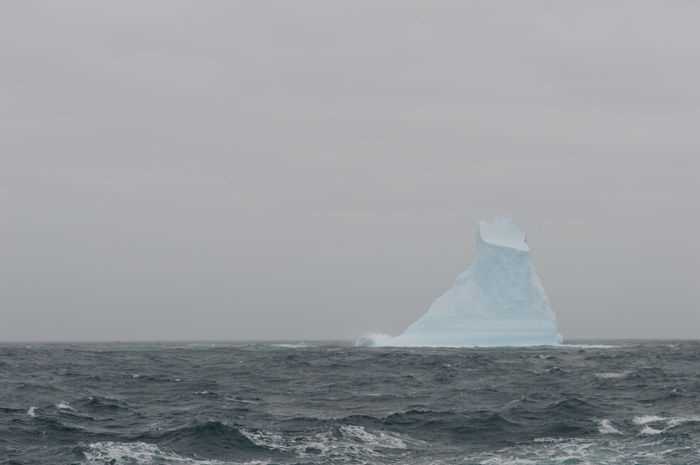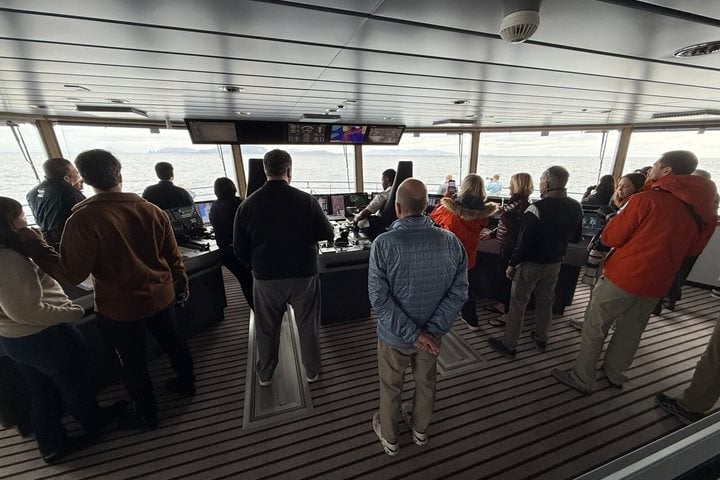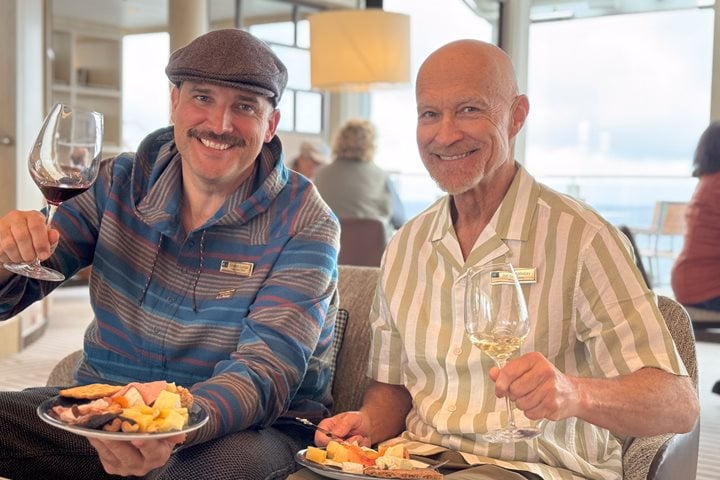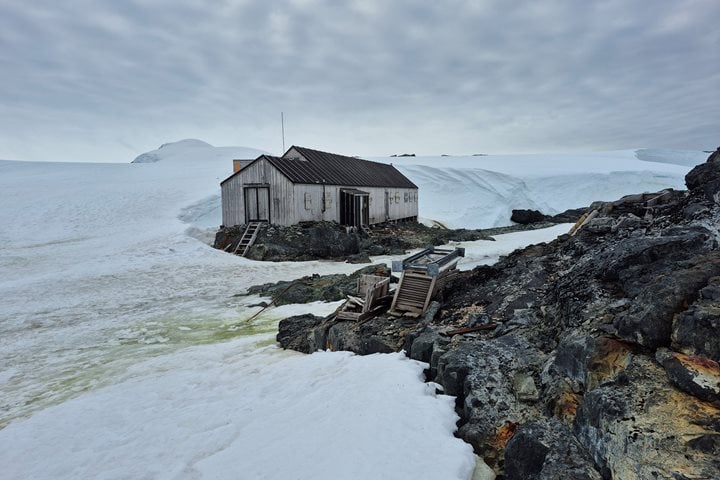We awoke this morning after being gently rocked all night by the waves of the Drake Passage. The anticipation of our first iceberg and land siting was palatable – which would be seen first and when? Thick fog hung over the sea, shrouding the Shetland Islands. Slowly, an iceberg was unveiled. For five miles, we watched as the iceberg off the starboard bow grew more immense as we closed the gap between it and us. Waves crashed against the iceberg, grounded on an offshore reef. The faint outline of an island emerged – we were almost there! All of the sudden, out of the water, penguins porpoised! Our first penguins siting of the trip was cause for great excitement.
Our afternoon excursion took us to Aitcho Island, home to thousands of breeding pairs of both gentoo and chinstrap penguins. On approach to the beach, we were introduced to the sights, sounds, and smells of penguin rookeries. The black rock beach was littered with penguins going about their daily routines such as entering and exiting the water, collecting rocks, and settling squabbles. Standing erect, chest pushed forward, and wings stretched backwards, the penguins traversed rocks and snow, occasionally mis-stepping and falling beak-first towards the ground. Regardless of how clumsy the penguins appeared, they were adept travelers and some could be seen on the high ridges of the island. Although the gentoo and chinstrap penguins share the same island, they nest with their own kind, in a small group. While dedicated parents incubated their eggs and protected them from the soaring skuas, some of their mates were working on expanding their nest by stealing rocks from neighboring nests. With the antics of penguins in the foreground and sweeping views of icebergs, sea, and snow-capped mountains, our first landing in Antarctica did not disappoint.
Our spectacular day did not end after we weighed anchor and began our journey to our next destination. In route, a group of humpback whales was spotted. The decks of National Geographic Orion quickly filled with orange parka-clad guests with binoculars and cameras in hand. The humpback whales surfaced…one breath, two breaths, three breaths, fluke, dive…repeat. While the majority of a whale’s life is lived outside of the view of humans, we surmised these whales were feeding on Antarctic Krill, the primary food source in the Antarctic food web. After watching several rounds of surfacing, we continued on our journey to our next destination, knowing more great adventures awaited us.







